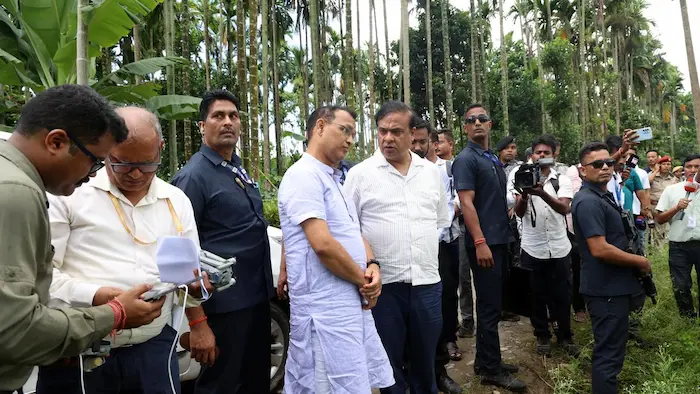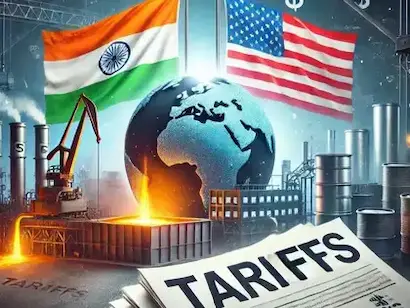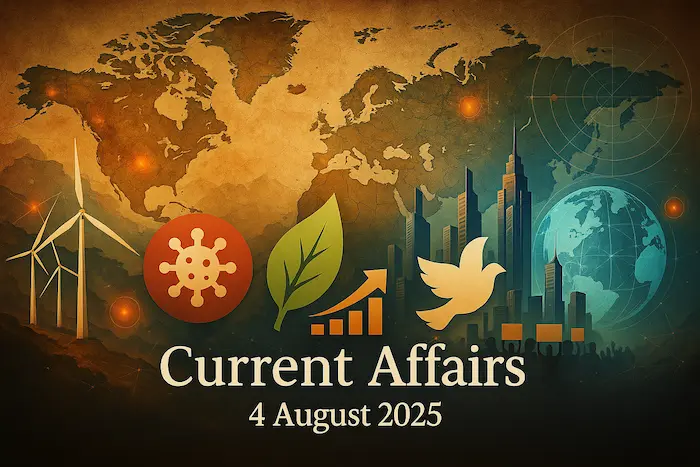1. Thar Desert Wind Farms Record World’s Highest Bird Mortality Rate – Environment
Why in News?
A recent study by the Wildlife Institute of India (WII) has found that wind farms in the Thar Desert in Rajasthan have recorded the highest bird mortality rate globally, raising major concerns about the ecological cost of India’s renewable energy expansion.
Background & Context
- Renewable energy expansion, especially wind power, is central to India’s climate goals.
- However, biodiversity trade-offs from such projects are often under-researched and unregulated, especially for onshore wind.
Key Findings of the Study
| Parameter | Details |
|---|---|
| Location Studied | Jaisalmer region, Thar Desert (Rajasthan) – area covering 3,000 sq. km |
| Number of Turbines | 900+ wind turbines studied |
| Bird Species Observed | 270+ species, including raptors and migratory birds |
| Bird Carcasses Found | 124 bird carcasses found during 7 multi-season surveys |
| Mortality Rate | 4,464 birds per 1,000 sq. km – highest in the world |
| Control Site Data | Areas without turbines recorded zero bird deaths |
Species at Risk
- Great Indian Bustard – Critically Endangered
- Raptors (eagles, hawks) – Long lifespans, slow reproduction; vulnerable due to high-altitude gliding
- Migratory Birds – The Thar Desert lies along the Central Asian Flyway, making it ecologically sensitive
Contributing Factors
| Factor | Impact |
|---|---|
| Wind Turbine Blade Collisions | Major cause of bird deaths, especially for low-maneuverability species |
| Lack of Environmental Impact Assessments (EIAs) | Onshore wind projects in India are exempt from mandatory EIAs |
| Poor Site Planning | Turbines are often placed in migratory and high-sensitivity zones |
Mitigation Measures Suggested
| Measure | Purpose |
|---|---|
| Turbine Blade Painting | Improves visibility to birds; reduces collision risks |
| Timed Shutdowns | During peak migration periods to reduce fatalities |
| AVISTEP Tool | Avian Sensitivity Tool for Energy Planning – guides ecologically safe turbine placement |
| Mandatory EIAs | Suggested for all future onshore and offshore wind projects |
Offshore Wind Energy – A New Frontier
- India plans to install 30 GW offshore wind capacity by 2030
- Offshore projects may reduce land-based biodiversity conflicts
- However, marine ecosystems (e.g., coral reefs, migratory fish) must be assessed through marine EIAs
Exam Connect – Possible Questions
Prelims
1. Which of the following statements is/are true about the recent study on bird mortality in India’s Thar Desert wind farms?
1. The mortality rate recorded is the highest globally.
2. The Thar Desert lies along the East Asian-Australasian Flyway.
3. The Great Indian Bustard is critically endangered and affected by turbine collisions.
Options:
A. 1 and 2 only
B. 1 and 3 only
C. 2 and 3 only
D. All of the above
Answer: B. 1 and 3 only
2. The AVISTEP tool, often in the news, is related to:
A. Air quality monitoring
B. Satellite tracking of migratory birds
C. Energy planning with avian sensitivity
D. Soil erosion prediction in desert areas
Answer: C. Energy planning with avian sensitivity
3. Which of the following renewable energy sources are currently exempt from mandatory Environmental Impact Assessment (EIA) in India?
A. Offshore wind projects
B. Onshore wind projects
C. Large hydropower projects
D. Solar parks exceeding 500 MW
Answer: B. Onshore wind projects
Mains
- India’s renewable energy expansion must not come at the cost of biodiversity. Examine this statement in the context of bird mortality in the Thar Desert.
- Discuss the environmental challenges associated with wind energy in India. Suggest policy measures to balance clean energy goals with ecological conservation.
- Evaluate the role of scientific tools like AVISTEP in reconciling development with wildlife protection. How can they improve environmental governance in India?
2. Assam’s Eviction Drives: Ripple Effects in Northeast India – Polity

Why in News?
The Assam government’s intensified eviction drives, targeting alleged encroachments on forest and government lands, have sparked political and inter-state tensions, especially due to their impact on Bengali-speaking Muslims. These events are affecting regional stability in the Northeast.
Background & Context
- The Assam government (since 2016) has adopted a hardline approach to land protection, often invoking ethno-nationalist sentiments.
- The eviction policy is often justified by forest conservation or anti-encroachment orders, but its execution has led to allegations of targeted discrimination and human rights violations.
- Recent evictions have spilled over into inter-state relations, particularly with Nagaland, Meghalaya, Arunachal Pradesh, Mizoram, and Manipur.
Genesis of the Eviction Drives
| Timeline/Event | Details |
|---|---|
| 2016 | First major drive after Gauhati High Court directive to reclaim forest land |
| 2021 (Darrang Incident) | Two people killed during an eviction in Sipajhar, Darrang district → sparked national outrage |
| 2025 (Recent Phase) | Evictions resumed amid corruption allegations against the state government |
Legal and Political Justification
- Cited Reason: Reclaiming forest and government land, protecting “indigenous rights”
- Judicial Support: Gauhati High Court orders in several cases
- Opposition Allegations: Use of evictions as a political tool to consolidate ethnic majoritarian votes
Socio-Political & Regional Fallout
| Aspect | Impact |
|---|---|
| Targeted Communities | Bengali-speaking Muslims, often stigmatized as “infiltrators” |
| Regional Tensions | Neighboring states fear pushback of evicted populations into their borders |
| Border Disputes | Intensified disputes with Meghalaya, Nagaland, Mizoram, etc. |
| Heightened Vigilance | NE states increase border patrolling to prevent influx of evictees |
Historical Context
| Event/Policy | Relevance |
|---|---|
| Assam Agitation (1979–85) | Movement against illegal immigration – deeply influences current politics |
| Assam Accord (1985) | Promised detection and deportation of post-1971 immigrants; remains politically sensitive |
| NRC Exercise (2019) | Led to exclusion of nearly 19 lakh people – many now face eviction threats |
Constitutional & Human Rights Concerns
- Article 14 – Equality before law → Is the eviction drive discriminatory?
- Article 21 – Right to life and dignity → Are the evictions inhumane and unlawful?
- Forest Rights Act, 2006 – Were rights of forest dwellers respected?
- Lack of Rehabilitation → Evictees often left landless and homeless, with no compensation
Exam Connect – Possible Questions
Prelims
1. The Assam eviction drives have been linked to which of the following constitutional articles?
1. Article 14 – Right to Equality
2. Article 19 – Freedom of Movement
3. Article 21 – Right to Life and Personal Liberty
Options:
A. 1 and 2 only
B. 1 and 3 only
C. 2 and 3 only
D. All of the above
Answer: B. 1 and 3 only
2. Which of the following states have recently raised objections to the eviction drives in Assam due to inter-state impacts?
A. Manipur and Sikkim
B. Nagaland and Arunachal Pradesh
C. Tripura and West Bengal
D. Odisha and Jharkhand
Answer: B. Nagaland and Arunachal Pradesh
3. Which historical agreement plays a key role in Assam’s immigration-related politics?
A. Shillong Accord
B. Assam Accord
C. Look East Policy
D. Panchsheel Agreement
Answer: B. Assam Accord
Mains
- Assam’s eviction drives reflect the growing tension between land conservation, ethnic identity, and human rights. Critically evaluate this statement in the context of Northeast India.
- How do state-led eviction actions in Assam impact inter-state relations and federal harmony in India? Discuss with reference to recent incidents.
- Do eviction drives targeting marginalized communities violate constitutional protections? Analyze using relevant case law and human rights principles.
3. Impact of Trump’s Tariffs on India – International Relations

Why in News?
Former U.S. President Donald Trump has imposed a 25% tariff and additional penalties on Indian imports, creating friction in Indo-U.S. trade relations and threatening the prospects of a long-awaited bilateral trade agreement. The move is expected to affect GDP growth and key export sectors.
Background & Context
- India–U.S. trade relations have seen highs and lows, with frequent disputes over agriculture, e-commerce, and IPR.
- India was removed from the GSP (Generalized System of Preferences) in 2019, and recent tariffs add to the strain.
- Despite strategic alignment on defense and security, economic ties remain vulnerable to protectionist policies.
Key Economic Impacts
| Area Affected | Details |
|---|---|
| Tariff Imposed | 25% import tariff + additional penalties (effective burden ~35%) on Indian goods |
| GDP Impact | Projected dip in growth from 6.6% to 6.4% due to export contraction |
| Key Sectors Affected | Garments, electronics, auto parts, and gems & jewelry |
| Competitor Advantage | Countries like Vietnam and South Korea may gain U.S. market share |
Geopolitical & Trade Implications
| Dimension | Impact |
|---|---|
| India–U.S. Trade Deal | Talks delayed – disagreement over agricultural market access and digital trade |
| Russia Factor | U.S. unhappy with India’s defense & energy ties with Russia, adding to tensions |
| Retaliatory Measures | India threatens tariffs on U.S. steel, aluminum, and agricultural goods |
Wider Strategic Concerns
- Digital Sovereignty: U.S. push for free cross-border data flow vs. India’s push for data localization.
- Agriculture Protectionism: India defends domestic agriculture against opening up to U.S. agri-exports.
- Supply Chain Diversification: Tariffs may disrupt efforts to position India as an alternative to China.
Exam Connect – Possible Questions
Prelims
1. Which of the following sectors in India is most likely to be affected by the 25% U.S. tariff recently imposed?
1. Garments
2. Gems and Jewelry
3. Pharmaceuticals
4. Electronics
Options:
A. 1 and 3 only
B. 1, 2, and 4 only
C. 2, 3, and 4 only
D. All of the above
2. Which of the following best explains the term Generalized System of Preferences (GSP) in India-U.S. trade relations?
A. A military aid program
B. A WTO dispute resolution mechanism
C. A trade scheme allowing duty-free exports to the U.S.
D. An agricultural subsidy support
Answer: C. A trade scheme allowing duty-free exports to the U.S.
Mains
- Critically evaluate the impact of recent U.S. tariff hikes on India’s economy and bilateral trade relations. How should India respond to maintain its export competitiveness?
- Discuss the challenges in concluding a bilateral trade deal between India and the U.S. What are the key areas of divergence?
- How do international trade sanctions and tariff wars impact India’s global economic ambitions? Illustrate with recent examples.

